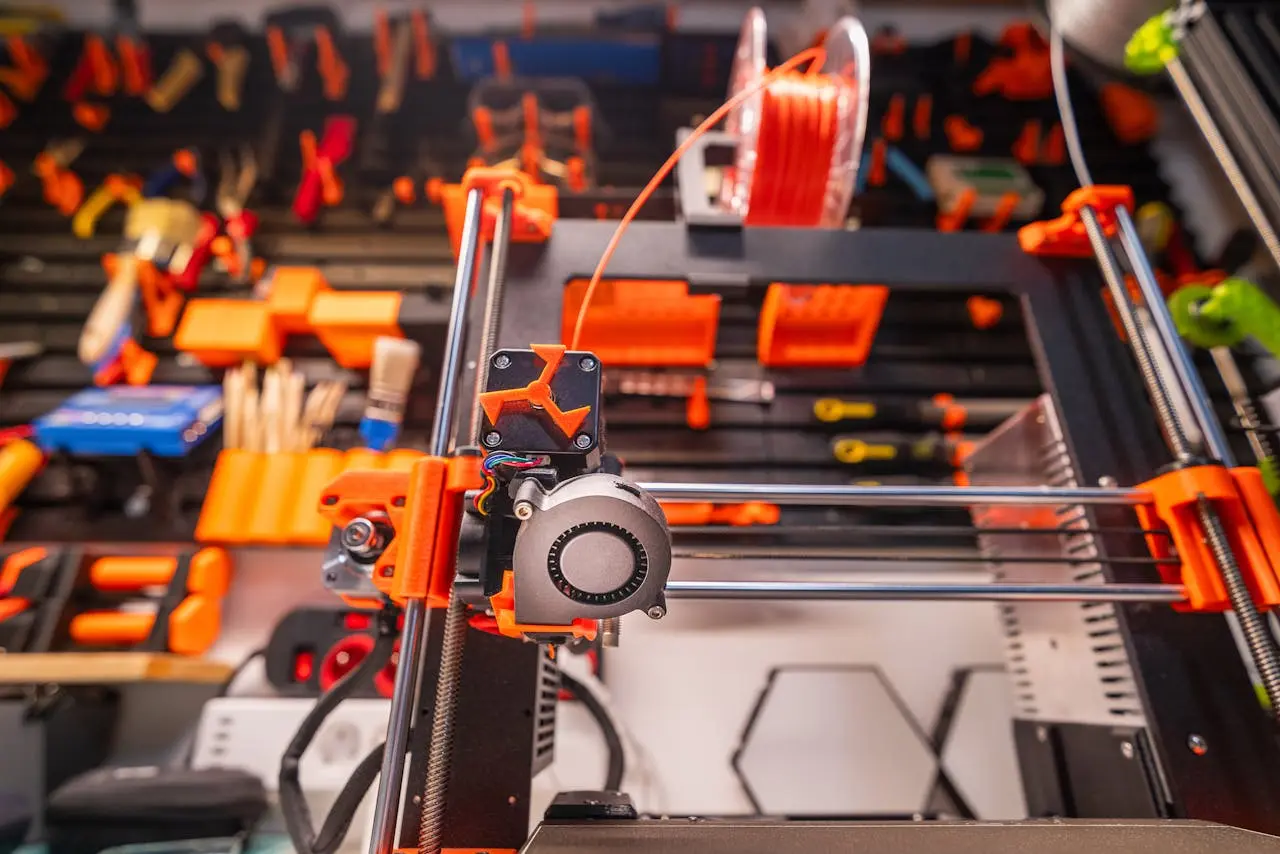Moisture Management: Filament Maintenance Made Simple

1. Why Moisture Wrecks Prints (Even if You Can’t See It)
Most 3D printing materials — especially PLA, PETG, Nylon, and TPU — are hygroscopic. That means they absorb water from the air like a sponge. You won’t see the moisture, but your printer will.
Here’s what happens when you try printing with wet filament:
- Tiny steam bubbles form in the hotend as moisture boils off.
- This causes stringing, popping sounds, under-extrusion, or fuzzy prints.
- Surface finish becomes rough or inconsistent.
- Layer adhesion weakens, making prints fragile or brittle.
In other words, wet filament is one of the easiest ways to ruin what would have been a perfect part.
2. How to Tell If Your Filament Is Wet
Common symptoms include:
- Popping or crackling sounds from the nozzle
- Stringing or blobs during travel moves
- Layer separation or weak adhesion
- Cloudy, rough, or inconsistent finishes
- Brittle or unusually flexible filament
Sometimes, the signs are subtle — especially if it’s just moist enough to degrade print quality without failing entirely.
3. The Best Ways to Store Filament Properly
Even sealed bags can let in moisture over time. Store smart:
- Use airtight containers with silica gel or EVAdry packs
- Label spools with the date opened
- Keep spools in dry, indoor locations (not basements)
- Store moisture-sensitive types like TPU or Nylon separately with aggressive desiccant control
Even a $5 plastic tub with a gasket seal works wonders.
4. How to Dry Filament (Without Ruining It)
If it’s already damp, here’s a safe DIY method:
- Place the spool in a large airtight container
- Add dry rice or silica gel packs at the bottom — more is better
- Suspend the spool above the desiccant, not touching it
- Leave for 1–3 days in a warm, dry place
You can also use commercial filament dryers (like Sunlu, PrintDry, or eSun eBox) for consistent results.
⚠️ Skip the oven. Most kitchen ovens fluctuate and may warp the spool.
5. Can You Revive Wet Filament?
Usually — but not always. Here’s what to expect by type:
- PLA: Often recovers after drying; store better next time.
- PETG: Improves a lot with drying.
- TPU: Very sensitive; results vary.
- Nylon & PC: Need higher temps and longer cycles; success isn’t guaranteed.
If drying doesn’t work, keep that spool for draft prints only.
6. Frequently Asked Questions
Q: How do I know if moisture is the issue?
A: Listen for popping and check for fuzzy finishes or stringing. Dry the filament and compare results.
Q: What’s the best long-term storage?
A: Airtight tubs with silica gel. For frequent use, a filament dry box is ideal.
Q: Do I need to dry brand new filament?
A: If it's been opened more than a few days, yes — especially for TPU or Nylon.
Q: Can wet filament damage my printer?
A: Not directly, but it can cause clogs, poor quality, and wasted time.
7. Conclusion & Call to Action
Moisture silently ruins prints — but it’s preventable. A simple dry box or a container with rice or silica packs is often all you need.
📞 If you're unsure whether filament is the problem or just want help drying and storing it right, 3D Printing by Bokey offers local support and troubleshooting for hobbyists, schools, and community makerspaces in South Jersey.
Visit:
- Services – https://www.3dprintingbybokey.com/services
- Contact – https://www.3dprintingbybokey.com/contact


.jpg)